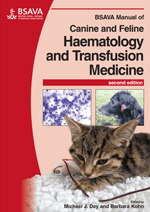
Full text loading...

Anaemia is a common clinical and laboratory test finding which in itself does not constitute a diagnosis. The ultimate aim for the veterinary practitioner is to determine the pathogenesis of the anaemia in order to deliver the most appropriate therapy for the patient. This chapter looks at red cell production; definition of anaemia; variables that characterize anaemia; erythron disorders without anaemia; classification of anaemia; when to collect bone marrow samples and do further tests; haemopoietic neoplasia; causes of anaemia in perspective.
Anaemia, Page 1 of 1
< Previous page | Next page > /docserver/preview/fulltext/10.22233/9781905319732/9781905319732.3-1.gif

Full text loading...











